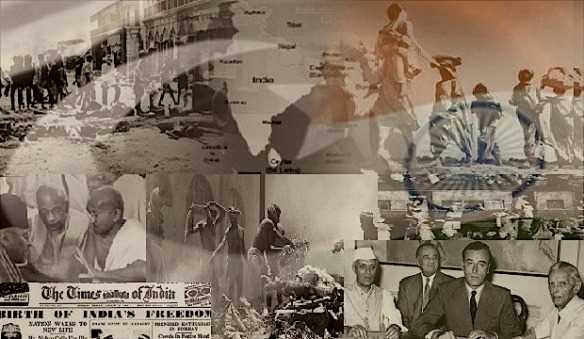Search here

12-Sep-2024 , Updated on 9/12/2024 5:14:52 AM
Critical conditions of Hindus in Bengal: Tyranny of Muslims
The rhetoric of Muslim-Hindu relations is focused on the subject that “in Bengal, Hindus are in dire conditions” (Critical conditions of the Bengalee Hindoos), especially as understood through a lens such as tyranny perpetrated by Muslims. Bengal in history has been home to intense interfaith engagements and also sociopolitical changes, not to forget sad divisions during the partition of 1940's and later on. a period that must qualify as a holocaust without bloodshed. A balanced analysis of this issue necessitates placing the discussion squarely within historical, socio-political, and economic contexts that have governed Hindu-Muslim relations in Bengal pre- and post-partition.
Bengal, a Pluralistic State: Historical Context
Bengal, which now hosts West Bengal (India) and Bangladesh was once inhabited by a variety of cultures including Hindus, Muslims among others. Throughout its history under the rule of mediaeval sultans, the Mughal Empire and later British colonial authorities Bengal experienced periods where Hindu-Muslim relations were generally cordial with tensions often occurring under different circumstances. By the time British colonialism began, Bengal had become a Muslim-majority region after hundreds of years as predominantly Hindu.
Notwithstanding the religious plurality, on its eve and also in early colonial Bengal society was largely syncretistic. Bengali Muslims also share culture, language, and customs with Bengali Hindus. Traditional Bengali literature, such as poetry and music, was also rooted in a mix of Hinduism with remnants of Islamic conversion. However British colonialism and its divide-and-rule tactics started to tear apart these communal relations.

British Colonial Experience and the Communal Divide
Thus the British conquest of Bengal in 1757 with the Battle of Plassey represented a new phase that came before. The British colonial rule undertook an extensive socioeconomic transformation, implementing land reforms, economic policies, and social systems that enlarged the disparities between various demographic patterns of ethnic divide. Among the most significant effectuated class of Hindu landlords (zamindars) with some power over its mainly Muslim peasantry was the Permanent Settlement in 1793. The economic disparities only widened the chasms between people, dividing along religious lines in terms of social standing and political allegiance.
The British rulers, especially after the 1857 revolt had used divide and rule to blunt opposition against them. By doing so, they then fostered the rise of communalism and heightened religious differentiation between Hindus on one hand and Muslims on the other. The platform of political representation was now increasingly on communal lines, as the separate electorates for Muslims and Hindus were established under The Indian Councils Act 1909 (Morley-Minto Reforms) and further expanded through the Government of India Act 1919. These moves further polarised the Hindu-Muslim divide in Bengal and India.
The divisive policies pursued by Lord Curzon and his partition of Bengal in 1905 could even worsen the situation. Though the partition was aimed at smoothing the administration of Bengal, it virtually marked a separation between the western Hindu-majority part and the eastern Muslim-majority district. A reversal of the partition in 1911 along with huge protests against it, had significant ramifications on Hindu-Muslim relations. The Bengali Muslims of East Bengal experienced this reversal as a return to Hindu domination and they resented it. Inevitably, the later demand for a Muslim homeland grew out of this resentment.
Bengal famine 1943 and the Communal tensions
Bengal famine of 1943 (2–3 million dead), was one of the worst recorded in India, and a fatal blow to British prestige. Thousands died from hunger and the economic ruin that ensued also led to severe social disorder escalating into a low-level war, marked by numerous bombings of the roads out of Kampala The famine is said to have increased tension between various communities leading to 2000/1 desolation. Although the famine was in itself caused by wartime British policies and mismanagement, as well due to a dearth of relief efforts, unequal resource distribution, along widespread feelings that Hindu or Muslim communities were being neglected exerted pressures Muslims did not ignore.
It further polarised Bengal into us versus them politics. Muhammad Ali Jinnah and the Muslim League took advantage of rife dissatisfaction among Bengal's Muslims to advocate for a separate, majority-Muslim nation called Pakistan. The Hindu-majority Congress and the Muslim League increasingly regarded each other as adversaries, leading to sharp divisions in Bengal's political landscape.
The worst of all was the partitioning Of Bengal in 1947
Perhaps the worst of these was partition in 1947, which saw millions killed as Pakistan and Bangladesh came into being from what had been Bengal (and elsewhere). The creation of Pakistan was a motivating factor behind the territorial division in Bengal, but so were longer-term hostilities between Hindus and Muslims.
The months before partition were marred with some of the worst communal riots. One such reminder of the terrors brewing within was provided by The Great Calcutta Killings of August 1946 when communal tensions rose to a climax. The violence broke out as a Muslim League demonstration for Pakistan that grew into a pogrom Sikh -by-Hindu rioting. About 4,000 people are thought to have been killed in the conflict and tens of thousands were made homeless. This and the other incidents of communal discord in Noakhali, Bihar riots & elsewhere led to partition.
The partition itself led to immense bloodshed and an exodus of people. Hindus were targeted and attacked and their property looted in East Bengal (now East Pakistan), leading many among them to flee. It was there in West Bengal that hundreds of thousands of cache-carrying refugees fled to East Bengal and Muslims were being atomized in an orgy of violence. The displacement of millions changed both communities forever, and the scars run deep in their memory.
After Partition: Minorities Condition in East Bengal (East Pakistan) and Bangladesh
In the aftermath of partition, conditions for Hindus in East Bengal (later back to East Pakistan and ultimately Bangladesh) turned grave. Hindus were reduced to a minority in the new republic of East Pakistan, which had been an essential part of Bengal's socio-cultural tapestry. Pakistan's Islamic nationalism-led government policy inflicted largely discriminatory policies of discrimination against Hindus, who were considered Indian fifth columnists and domestic spy agents due to similar religion.
The quake of 1950, essentially the expulsion to India of numerous lakhs and a huge number of Hindus who had fled over atrocity among by far most Muslims in East Pakistan. This naturally sowed further seeds of Hindu insecurity when the government failed to protect them during this extended spell of Muslim violence.
Worsening things was the 1965 India-Pakistan war. To quote some examples, marriages between Hindus were not legalised in Pakistan until 2011, a Hindu marriage law was passed that year but excluded the religious rites practised at such weddings and so multiple legal suits took place to oppose this statute as of today. Before Islamization under laws targeting individuals from noted minority groups—the Enemy Property Act is yet another example—whereby the Government could confiscate properties belonging to those who had evacuated towards India. These moves further helped in the ongoing Hindu exodus from East Pakistan.
Atrocities with specific victims of the Bangladesh Liberation War of 1971
1971, the Bangladesh Liberation War led to the creation of an independent state for the Bangladeshi people; another period that saw the Hindu minority suffer unspeakable violence. Throughout the conflict, Hindus were marked by the Pakistan military and its local agents including Islamic militias for elimination. What followed was a genocide often cited as one of the worst genocides in our blood-drenched 20th century, with estimates for Hindu deaths ranging from several hundred thousand up to three million plus.
Warriors killed outnumbered Hindus Their houses were pillaged, their women raped and villages burnt down completely. Hundreds of thousands crossed over into India, fleeing the violence. Hindus were deemed to be pro-India during the Bangladesh Liberation War, and consequently, they became targets of Pakistani military atrocities.
Bangladesh After 1971: The Plight Of Hindus Alongside Their Challenges
It is not an exaggeration to argue that 1971 created the promise of a modern, inclusive state for all citizens celebrating secularism, but in reality, life has been very tough for the Hindus. Throughout the earlier decades, Hindus have been enduring in Bangladesh despite constitutional guarantees of religious freedom. For example, the Vested Property Act (the successor to the Enemy Property Law) has been used to grab land and assets from Hindus.
Such targeted communal violence against Hindus still erupts occasionally in Bangladesh, often as part of political events and religious tensions. The Hindutva extremists, focused on a sense of racial purity among Indians with similar descent origins to the Hindu religion, will also invade temples and attack Hindus in their homes and businesses — especially by preventing any nascent liberation movements.
Conclusion: A Complex Legacy
Most Hindus of Bengal especially East Bengal, which later became part of Bangladesh were affected by many historical-political-religious conditions. While (because) of course such a history paints the picture in large part because it is true, this should not meaningfully alter our understanding: certainly, no one would forward an argument that all those centuries have been manifested simply on account of some 'tyranny' against Hindus (by Muslims and British colonialists….but as we see even a different kind of tyranny… nationalist), without reflecting more thoroughly upon deeper communal dynamics at play.
Bengal history is not one of communal violence alone but also its shared culture, syncretic tradition, and coexistence. A slant to address the tragic legacy of partition and ongoing minority challenges in both West Bengal & Bangladesh should come from a justice, human rights, and reconciliation perspective rather than perpetuating divisive narratives.

Student
Economics can be broken down into microeconomics, which looks at individual decisions, and macroeconomics, which is concerned with the economy as a whole. Both types of economics utilize historical trends and current conditions to inform business decision-making and make predictions about how markets might behave in the future. Students who choose to study economics not only gain the skills needed to understand complex markets but come away with strong analytical and problem-solving skills.
Join Our Newsletter
Subscribe to our newsletter to receive emails about new views posts, releases and updates.
Copyright 2010 - 2025 MindStick Software Pvt. Ltd. All Rights Reserved Privacy Policy | Terms & Conditions | Cookie Policy